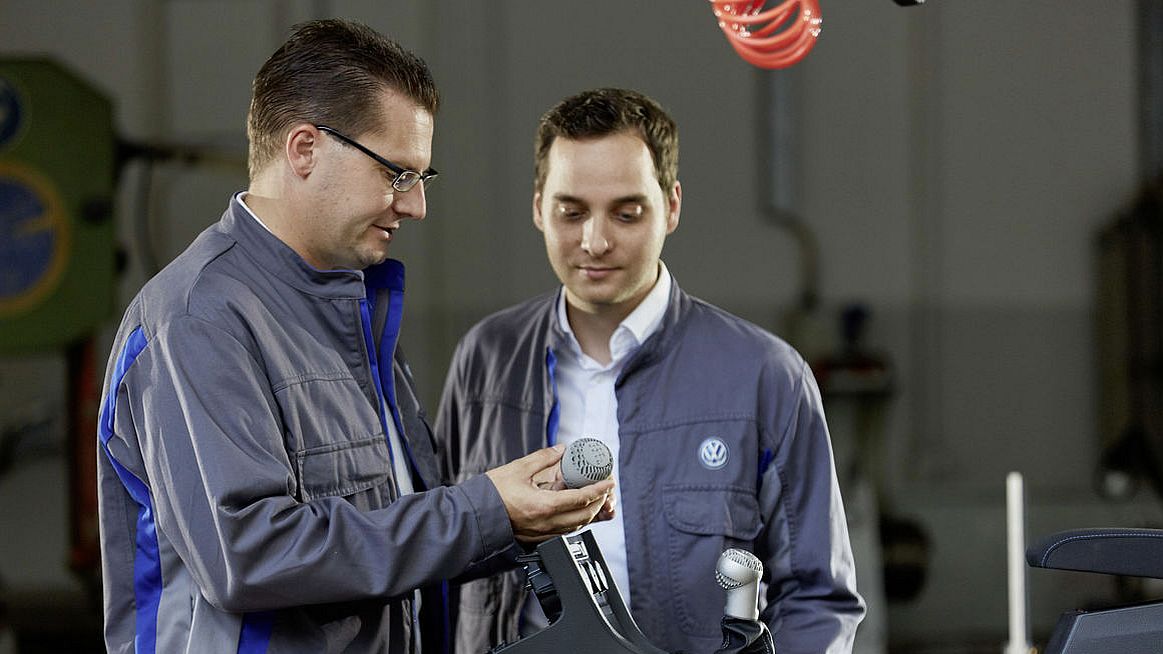It’s been more than two years that Volkwagen has made it clear: 3D printing is definitely part of its manufacturing processes. The Golf GTI First Decade – the electric car – , Volkswagen Autoeuropa and the production of automotive parts, and even the electric vehicle that contains over 2000 3D printed parts are a few examples of the use of 3D printing by the car manufacturer.
The company announced yesterday that it is ready for mass production and will take advantage of the recently unveiled HP Metal Jet 3D printing system. According to the company, depending on the component, productivity would improve fifty times compared to other 3D printing methods.
The manufacturing of a Volkswagen vehicle
A Volkswagen vehicle is manufactured from 6,000 to 8,000 different parts. Previous 3D printing processes can, however, only be used for the special production of individual parts or prototypes. The additive 3D Metal Jet technology from HP enables the production of a large number of parts using 3D printing for the first time – without having to develop and manufacture the corresponding tools. This significantly reduces the time required to manufacture parts. As a result, the process is now also interesting for the production of large quantities in a short period of time.
Dr Martin Goede, Head of Technology Planning and Development, Volkswagen, said: “Automotive production is facing major challenges: our customers are increasingly expecting more personalization options. At the same time, complexity is increasing with the number of new models. […] 3D printing plays a particularly important role in manufacturing of individual parts.”
In this context, the manufacturer will collaborate with HP and GKN to develop the technology so that design elements can be printed in a small series at first. Individualized design parts such as tailgate lettering, special gear knobs or keys with personalized lettering for customers without a great deal of effort will be the first parts to be produced. The plan is to be able to offer this kind individualization proposition to customers as soon as possible just like British automotive manufacturer Mini does.
“A complete vehicle will probably not be manufactured by a 3D printer any time soon, but the number and size of parts from the 3D printer will increase significantly,” explained Dr Goede. “Our goal is to integrate printed structural parts into the next generation of vehicles as quickly as possible. In the long term, we expect a continuous increase in unit numbers, part sizes and technical requirements – right up to soccer-size parts of over 100,000 units per year.”
For further information, follow us on our social media and subscribe to our newsletter! Would you like to be featured in the next issue of our digital magazine? Or subscribe to 3D Adept Mag? Send us an email at contact@3dadept.com






